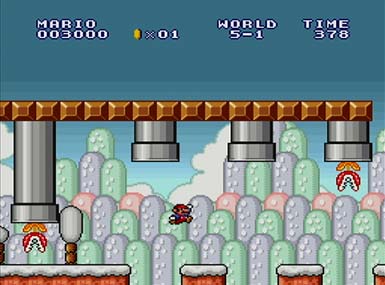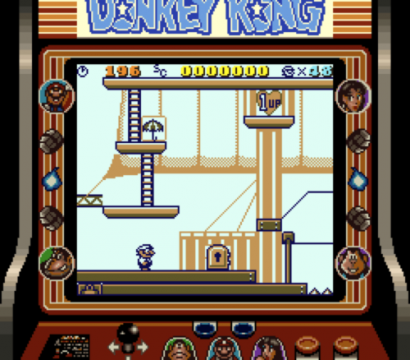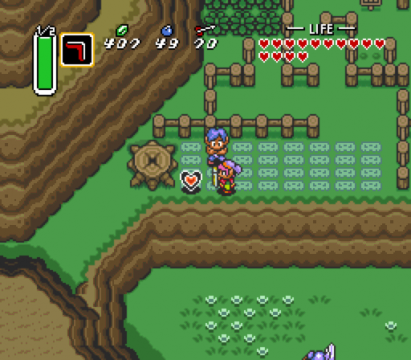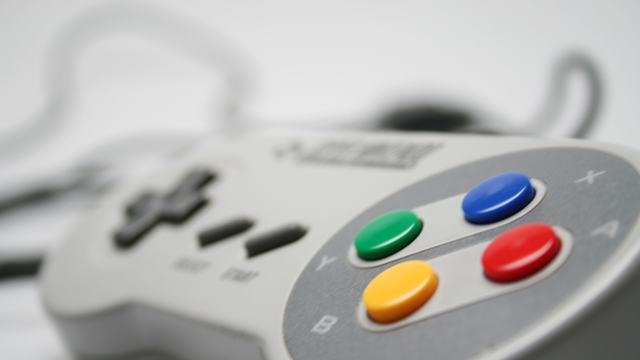Super NES may be Nintendo’s most popular console because of the era it came from and the games it inspired. That’s not to say it’s under- or over-appreciated, but more that the system has lived a life in which its legacy is defined by its games rather than the leaps taken by the company to produce it. As the 16-bit wars raged on, Nintendo calmly pit its system against one of the best rival consoles to ever be created. SNES went head first in a battle against Sega’s Genesis and came out victorious in the long run. There is an argument to be made about the lasting effects of Sega’s “Sega does what Nintendon’t” campaign, but that can be discussed later.
Super NES was a console that came in at a perfect time. Nintendo dominated the scene and had rapid success with the original NES console for over eight years. With that knowledge at its fingertips, the company spent the rest of its unchallenged reign talking about how it was going to create a console that rivaled NES in not only prowess and power, but pure enjoyment. Nintendo managed to do exactly that. The result of these accomplishments is the console we saw back in 1991. The system came out with double the bits of the NES and maintained the same levelheaded upgrades we yearned for. While the original NES had the first three Super Mario Bros. titles, we saw the launch of both Super Mario World and Yoshi’s Island on the new console, alongside graphical upgrades to the original series packed in one cartridge with Super Mario All-Stars.

What made Super Nintendo a great console is that it was made with the intention of creating an upgraded experience that was already deemed superior to gaming of yesteryear. Nintendo managed to do this, and even with Sega showing powerful aggression with the Sonic series and its overall marketing strategy, Nintendo produced arguably one of the best consoles to ever reach the masses.
That said, there are some lesser known parts of the Super Nintendo that make it a bit better than what we’re exposed to. For example, the Super Game Boy 2 extension that only saw a release in Japan. Not only did this bring Game Boy games to Super NES (just like the first one), but it added the ability to function as an additional Game Boy in one pivotal area: an added link port. With the additional link port, trading within Pokémon games became more accessible– especially during a time where having multiple Game Boy systems or even finding a friend with a Game Boy that you could borrow was something of a rarity. Alongside this, the Super Game Boy 2 fixed a few issues that were bound by hardware in the first one. The original Super Game Boy suffered from a design flaw that led to its playing games all but a fraction faster than on the native hardware. The few carts that had Super Game Boy enhancements, namely Donkey Kong ’94, managed to change the overall look of the game to one that looked as if it was originally meant to be played in the colorful environment shown and not truly on Game Boy itself. It may sound like that is not a meaningful difference in the larger scheme of things, going only 2.4 percent faster than on a Game Boy, but when it comes to games that rely on quick reaction and always making sure you move at precise moments, it can hinder fun and gameplay altogether. It’s sad that America never got the improved sequel to the Super Game Boy, but who knows if it would have allowed Americans to become better players than those in Japan. Then again, probably not.

Another factor of the Super NES and Super Famicom is that the region locking was strictly only enforced via physical limitations. A Super Nintendo in America will have small tabs visible within the cartridge slot that prevent Super Famicom games from being inserted. However, the only thing you have to do to get around it is to remove them via sanding them or any other means. It’s not a huge deal, nor is it one that people aren’t capable of doing in 10 or so minutes.
Nintendo took a lot of risks with Super NES as well. Not as many risks as we see the company taking with Wii’s motion controls or Wii U’s GamePad, but it tried to heavily change how games looked via 16-bit. For example, games like the Donkey Kong Country series and Super Mario RPG focus almost entirely on an almost three-dimensional aesthetic. The DKC games were 2D sidescrolling platformers, but instead of upgrading the pixelated look of typical sidescrollers, as was the case with the updated version of the Super Mario Bros., developer Rare chose a new style. While the discussion on the art style typically revolves around whether it is beautiful or horrendous, the one concerning the series’ gameplay seems to agree that the games are highly acclaimed. The risk taken here is one that carried its way to Nintendo 64 in the form of graphical risks in Super Mario 64 and Donkey Kong 64, but risks are never really risks when it comes to Nintendo– unless it’s Wii U.
Even with things like graphical prowess and an ability to reflect the NES in a more glorified way, SNES also managed to produce some of the best games in the 16-bit era. EarthBound, for example, is probably one of the most sought-after games today, even if it was forgotten about quickly upon launch. EarthBound saw dismal sales on its release, it saw people forgetting about its existence, and ultimately, it saw nothing but failure in America until it was well too late. EarthBound brought a sense of easy gameplay and ridiculousness to a world of gaming that existed purely in imagination. The idea of an evil space overlord threatening Earth is outrageous, but the gameplay in EarthBound was one that almost every kid who played it could relate to in very subtle ways.
Games like The Legend of Zelda: A Link to the Past birthed an era of true upgrades. Among those who don’t find Zelda titles to be fun, the overall impression is that the games are all the same. However, Link to the Past introduced an actual story that is worth falling into alongside true graphical power that was only recognized on a console like SNES. It went above and beyond to not only be one of the best Zelda games, but to be one of the best games released on the console. We saw a story revolving around time, new dungeons, actual sprites that represented the smallest of changes, and overall, excellent gameplay that kept people glued to their screens.

Along with EarthBound, there were other SNES games that go down as gorgeous even today. Chrono Trigger, Super Mario All-Stars, the crayon-like visuals in Yoshi’s Island, and even things like Super Castlevania IV managed to highlight the beauty in bold colors alongside pixel-based graphics. SNES took what made Nintendo great and colored it in even more and filled out the picture in a way that hadn’t been done yet. Sega managed to do exceptionally well with its 16-bit console in both America and Europe; Nintendo coming out with SNES two years later was similar to watching an underdog stand up and start delivering deadly blows to its opponent. Nintendo had Mario and was known for its 8-bit offerings, and Sega coming through with Genesis and Sonic was a turning point for most people. It was new, it was fresh, it was colorful, and Sonic went fast. That’s all people needed to hear to get them on board, which led to one of the most tightly contested console wars the industry has ever seen.
Nintendo saw a lot of changes, advancements, and improvements with SNES, but, above all, it made memories for all the people who had one growing up and those who got to experience it later in life. 16-bit gaming, using passwords instead of saves, having platformers that both looked and played exceptionally well– all of these were only really seen on Nintendo consoles. However, it’s not as if those themes and gameplay ideas are dead now; it’s just that the most accessible and fun ways of doing them are long behind us. Playing SNES now leads to a sense of nostalgia that Nintendo will forever bank on, but the difference here is that it’s not a blinding nostalgia, but rather a realization that the times were almost too good for us when SNES was new. Things were fun, things were easy to jump into, and it was all because of the level of care each game had in almost every facet. It wasn’t about just going fast or displaying lots of colors, but that game design had improved, developers had learned, composers had grown, and it was all from the roots placed in the NES soil.




 ShareThis
ShareThis






